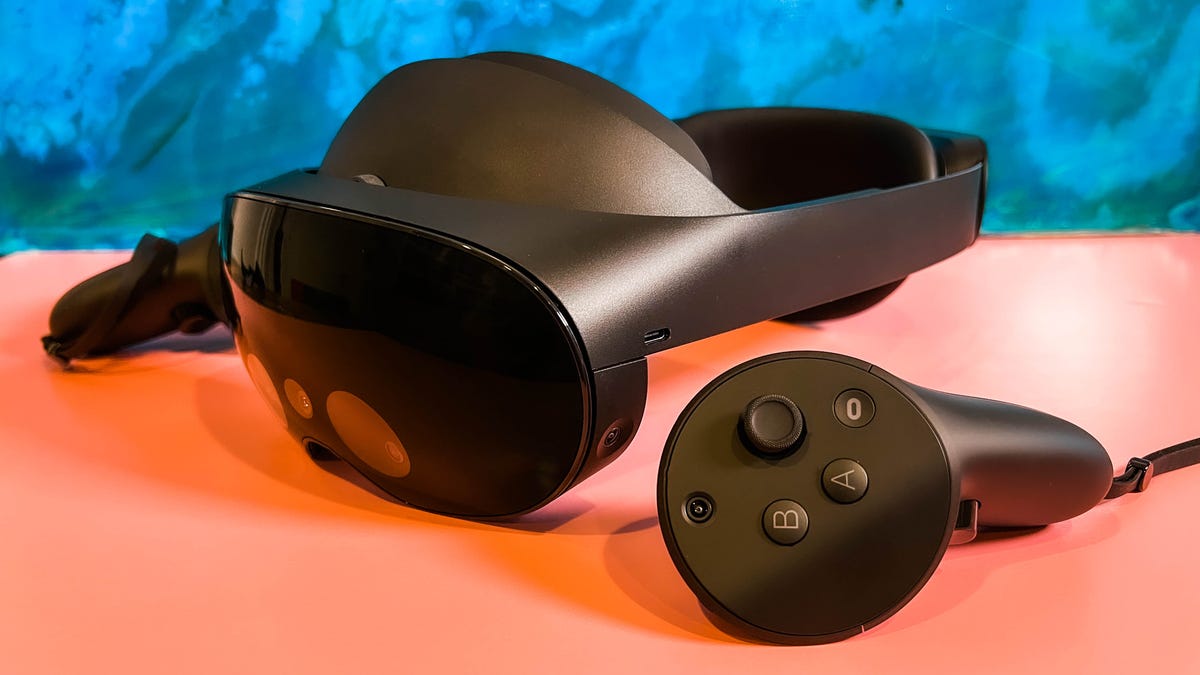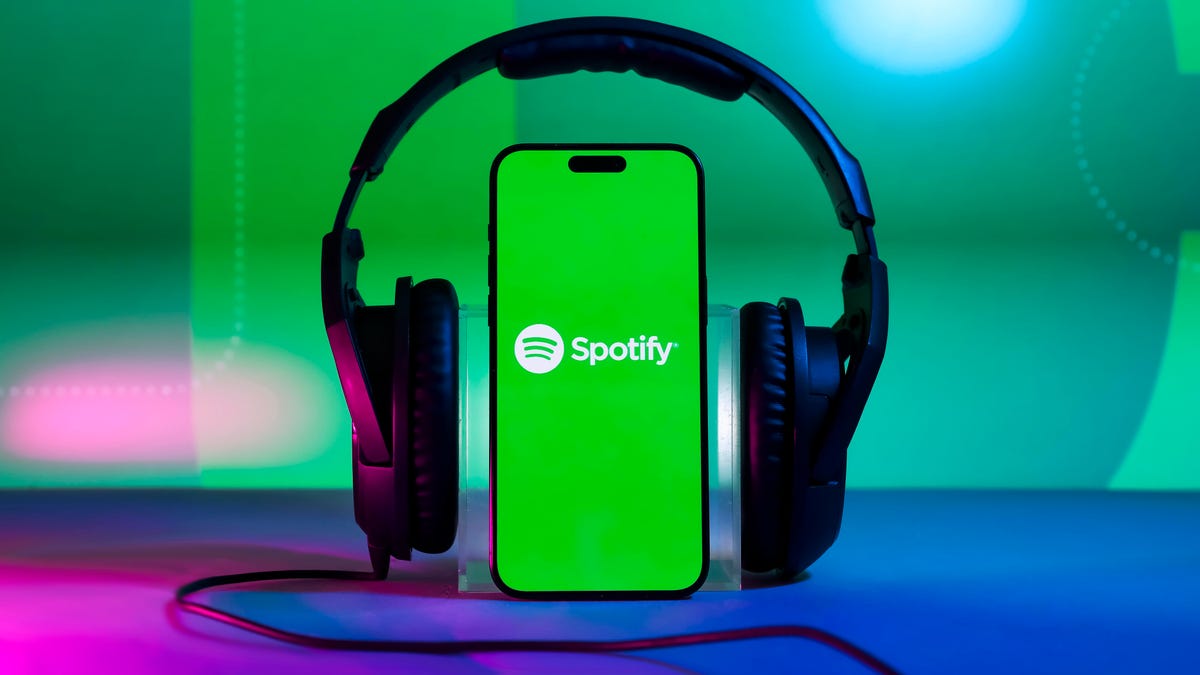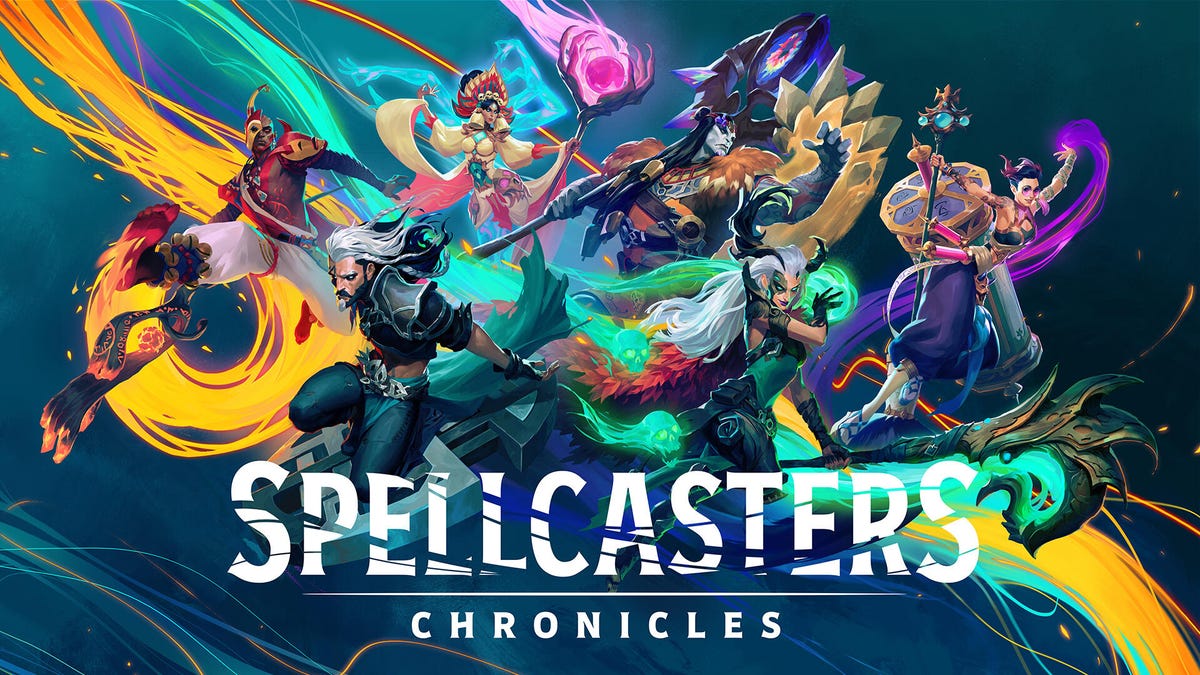Technologies
Meta Quest Pro, Half a Year Later: Caught Between Quest 2 and Quest 3
After I tested the PSVR 2, the Quest Pro seems even more of an enigma, but it may tell us something about the upcoming Quest 3 VR headset.

The Quest 2 headset from Meta succeeded as a self-contained mainstream device for VR gaming. Following that, Meta ambitiously aimed for a lot more with the Quest Pro, a $1,500 headset built around a questionable metaverse strategy. The Pro, already on sale for $500 less than its launch price, felt mistargeted as a pro device, built for a future of work in the metaverse that isn’t here yet… and may never be.
In the almost six months since the Quest Pro came out, the PlayStation VR 2 emerged as another very different headset contender with similarly excellent visuals and eye-tracking. The PlayStation 5-tethered VR headset has absolutely no ambitions at all to be a work device. It just wants to play games in whatever room your PS5 lives in. Meanwhile, Apple is expected to announce its own mixed reality headset in just a few months.
There’s more. The economy has only gotten worse, and Meta’s laid off thousands of people in the last few months. Spending $1,000 on a VR headset is nothing anyone really wants to do, unless it’s somehow able to be some amazing device that can deliver lots of uses all in one. Meta is trying to make the Quest platform that multiuse thing, but it’s still best at one genre: gaming.
However, there are threads to the future. VR headsets can be amazing workout devices. Social experiences in VR can be impressive, transporting and meaningful. Already on hand are 3D art tools and simulation tools that elevate VR to incredibly professional uses. You can cast multiple monitors from your computer and use your VR headset as your magic desktop, but your patience and mileage for that may seriously vary.
The eye-tracking, face-tracking Quest Pro, packing an impressively high-res display, seems like an evolutionary step toward whatever smaller glasses-like things come later. And with software and bridges to computers and phones that will be far more refined. Meta wasn’t wrong with the Quest Pro, in theory, but it was way too early.
Read more: Working on the Quest Pro
By all means, don’t get the Quest Pro. The Meta Quest 3 is expected by the end of this year, and it could very well have a better processor and many of the same features at (perhaps) a lower price. Also, if you’re curious about expensive, bleeding-edge, possibly work-oriented VR devices, Apple’s expected to have its own contender in 2023, too. HTC’s even smaller Vive XR Elite is more portable, and although it doesn’t work with my glasses, it could maybe be a more practically sized travel headset for some. And if you’re looking to elevate your VR gaming beyond the Quest 2, the PlayStation VR 2 is your best bet for its promising graphics and features, even if it is tethered by a cable.
But I’ve started using the Quest Pro more recently, and some things still really stand out.
Wow, the display, and even the audio
The PlayStation VR 2 has a richer and brighter HDR OLED display, but the Quest Pro has the crispest and clearest display of nearly any VR headset I’ve ever used. Meta’s shrunken-down lens system, called pancake optics, combined with a bright LCD display ends up making a notable difference over the Quest 2. I’m appreciating once again how clear text looks, how vivid games appear and how simply clear it all is. It’s not perfect, but if price was no object this would be the ideal display for everyday use. The lenses don’t have any ribbed lines, either, unlike the PlayStation VR 2’s Fresnel lenses and several other VR headsets. I appreciate that it fits over my glasses, as always, even though the headset fit isn’t as loose and forgiving as that of the PSVR 2.
I also appreciate the audio, surprisingly. After using the PSVR 2’s earbuds, which have to be inserted every time, I’m enjoying all over again how Meta’s headsets just project sound from the headbands with no separate headphones needed at all. The Quest Pro’s audio sounds better than the PSVR 2’s earbuds, to my ears, even though the audio is open air and I can hear everything else in the room too. Its blend of VR sound and the everyday world feels like the sort of challenge future AR glasses and mixed reality headsets are going to have to solve, and Meta’s one of the few doing it as well as it can be done right now.


I moved around a lot with the Quest Pro in a demo last fall. It’s much easier to be mobile in it than on something tethered.
MetaIt’s refreshingly relaxed and wireless
Slipping the headset on over my eyes has always felt like putting on a pair of magic lenses. I think of this, the way they rest over my glasses, the way I can casually walk around the room playing Walkabout Mini Golf and not feel worried about bumping into anything. I appreciate the heightened room awareness, partly because I can see the room around the sides of the headset. Also, with its smaller controllers and naturally wireless self-contained design, I just enjoy slipping into it.
It’s also bulky
At the same time, wow, the Quest Pro is awkwardly shaped. It’s big and has a large headband, and needs its own special charger dock to charge up its headset and the controllers. It just feels like a delicate sports car you need to put back carefully in the garage every time. That’s unlike the Quest 2, which is smaller overall despite its larger front, can be tucked more easily into a carrying case, and doesn’t have the same glossy visor design. Also, because I need to charge the Pro every time I use it, it also seems more complicated to store than the also-large (but light) PSVR 2, which can simply be tucked on a shelf.


The Quest Pro (left) is smaller in some ways than the Quest 2 (right). But that stiff headband makes it hard to pack down into a bag.
Scott Stein/CNETMeta never advanced the software enough
The Quest Pro really is just a Quest in terms of apps and OS, so much so that you may wonder why it’s even needed as an upgrade. Backward compatibility is a great thing, but there was an opportunity here to rethink the interface, push mixed reality more and create a truly new class of apps. There are Quest Pro-optimized apps that use the color passthrough cameras and mixed reality features (and eye and face tracking) to different effects, but most of these extras feel tacked on, not quite necessary, gimmicky.
Eye and face tracking aren’t integral to Meta right now, which may be a huge relief to those seeing these sensors as doorways to a whole unsettling level of observational data collecting or more targeted advertising. But that also means the way these technologies are used doesn’t feel necessary, either, unless you’re an aspiring Quest developer who wants to make eye and face tracking apps. When I’ve tried eye and face tracking to animate my avatars, it’s had mixed results, and it sometimes made my virtual self look weirder. Meta can already use AI to help animate avatars based on voice cues, and those work well enough.
The PSVR 2, by comparison, uses its unique features more fully. Eye tracking is already used extensively in many launch games for foveated rendering that improves graphics results, and some games use eye tracking for controls, too.
There’s also a big gap between the phones we use and the VR/AR headsets of the moment. Qualcomm is trying to bridge this gap, and Apple, Google and Samsung will likely try to do the same. Meta has its own phone app that works with the Quest 2 and Quest Pro, but it’s not been rethought for Pro users at all. I don’t feel like I can output my VR work any more easily or intuitively, and I don’t feel like I can use apps or software I rely on all the time in easy, logical ways on the Quest Pro. When will it feel like a true extension of my laptop or my phone? I don’t know.
Meta did add an experimental hand tracking feature called Direct Touch that allows for your fingers to «press» buttons by pressing them in-air, or to press keys on hovering virtual keyboards. This more direct interaction mimics what Microsoft has already done on the HoloLens 2. Still, it’s not reliable enough to use for actual writing, and still feels a little awkward. The Quest Pro is still, mostly, best used with the controllers.
There are plenty of creative and work tools on the Quest Pro, but nearly all of these are things you can also use on the Quest 2, minus those eye tracking and better-looking mixed reality options.
The Quest 3 should get many of the Quest Pro’s features
Expect Meta’s next headset to adopt many of the Quest Pro’s best qualities: the color passthrough cameras and mixed reality capabilities, the smaller lens system and crisper visuals, and on top of that, likely a faster, better processor. The Quest 3 may not have eye tracking, but you probably won’t need that, anyway. It may also come with controllers similar to the Pro’s, or at least work with them. (I like how the Pro controllers are smaller, but I also don’t like how they need more frequent charging.)
The Quest 3 is expected to cost somewhere around $500, and if that’s true, it’ll be half the price of the Quest Pro. Even though I appreciate the Pro’s high-quality visuals and fit, there’s absolutely no reason you should buy one, even at its currently lower but still expensive $1,000 price.
The future is not just about VR: it’s about smaller glasses-like devices that will eventually be wearable all day, and in the meantime will work as mixed reality goggles at home. Meta’s hardware is moving on that path, but in early 2023, VR is still largely for gaming, and the Quest Pro is not a headset made for gamers, and that should tell you all you need to know.
Technologies
Spotify Will Reportedly Get More Expensive in the US Next Year. Here’s What to Expect
The music streaming service will reportedly raise prices again after subscription rate hikes in other regions.

After announcing it is raising prices in regions including Europe, South Asia and Latin America, Spotify is reportedly about to increase prices again in the US.
The US is included in the latest Spotify price hike on its Premium services starting in early 2026, according to the Financial Times, which cited three sources familiar with the streaming music company’s dealings. For now, the least expensive Premium plans in the US start at $12, but the price hike would likely put it in line with the other regions where the Premium plan costs about $14 a month.
Don’t miss any of our unbiased tech content and lab-based reviews. Add CNET as a preferred Google source.
Spotify also offers a Premium Family plan that covers six people in the same household for $20 and plans for students ($6 a month bundled with Hulu) and couples ($17 a month). Spotify also offers a Basic plan that does not include access to audiobooks for $11 a month. A representative for Spotify did not immediately respond to a request for comment.
A steady increase
If the report is accurate, this would be the third price increase on Premium plans in the US since 2023. Before those hikes, Premium plans were $10, but Spotify raised its minimum price by $1 in 2023 then again in 2024.
Just this week, Spotify added the ability to seamlessly import playlists from other music services including Apple Music and Tidal.
Spotify has faced some controversy this year, including some music acts abandoning the platform and some customers canceling subscriptions over advertising for Homeland Security’s ICE program. CNET has a guide for canceling your Spotify subscription.
The company is the market leader among music streaming apps with about 32 percent market share as of the end of 2024.
Technologies
Some Rad Power Bike E-Bike Batteries Can Catch Fire, Consumer Protection Agency Warns
The company declined to offer full replacements or refunds, citing financial constraints.

The US Consumer Product Safety Commission is warning that some lithium‑ion batteries used in certain e‑bikes made by Rad Power Bikes pose a serious fire hazard that could lead to injury or even death. The agency says the batteries, identified by model numbers RP‑1304 and HL‑RP‑S1304, can unexpectedly ignite or explode, especially if the battery or its harness has been exposed to water or debris.
The recall has been marked as a «public health and safety finding» because Rad Power Bikes has declined to offer full replacements or refunds for all consumers, citing financial constraints.
CPSC reports 31 incidents of fire involving these batteries, including 12 cases where property damage totaled approximately $734,500. Some of these fires occurred even when the battery was not in use or charging, but was in storage.
Don’t miss any of our unbiased tech content and lab-based reviews. Add CNET as a preferred Google source.
The batteries were sold as either original or replacement units for several Rad Power Bikes e-bike models and were available through RadPowerBikes.com, Best Buy and independent bike shops nationwide.
«Rad informed the agency that its demand to replace all batteries, regardless of condition, would immediately put Rad out of business, which would be of no benefit to our riders,» the company said in a statement issued with the CPSC warning. «Rad is disappointed that it could not reach a resolution that best serves our riders and the industry at large. Rad reminds its customers to inspect batteries before use or charging and immediately stop using batteries that show signs of damage, water ingress, or corrosion, and to contact Rad so we can support our riders.»
The CPSC’s statement does not apply to all Rad batteries, and does not apply to its Safe Shield or semi-integrated batteries.
Consumers who have one of the affected batteries are urged to stop using it immediately and dispose of it properly via a household hazardous‑waste collection center. Do not place the batteries in standard curb-side recycling or trash bins, and refrain from reselling them.
Technologies
Hands-On With Spellcasters Chronicles: 3 Things I Hope They Change Before the Closed Beta
The game is an interesting spin on the classic push-lanes-with-minions formula, but the action doesn’t yet feel satisfying.

Quantic Dream, the studio known for rich storytelling games like Detroit: Become Human, announced something totally different last month. Spellcasters Chronicles is a competitive three-on-three action-strategy game that promises to have an element of ongoing storytelling. And the develop just announced that it’s entering a closed beta from Dec. 4 to 7.
Spellcasters Chronicles follows the general mold of a multiplayer online battle arena game like League of Legends: Your team battles along three lanes, with player-controlled characters helping waves of computer-controlled minions as they push toward objectives («lifestones») deep in enemy territory. Player characters have different classes and abilities, giving them defined strengths and weaknesses.
I got to play an early build of the game earlier this month to get a sense of the gameplay loop and the general vibe of Spellcasters Chronicles. The usual caveats apply: This is an early build of the game, so things were not optimized, features may change and so on. I should also be clear that one or two matches played is not a lot of material to judge by, so I’ll be focusing on the broad strokes.
Based on a quick match-and-a-half, here are the three things I’m hoping the game changes.
Don’t miss any of our unbiased tech content and lab-based reviews. Add CNET as a preferred Google source on Chrome.
Put more action in the action-strategy
The match I played, which came down to the last dying seconds, felt like it was primarily decided by the two teams’ strategic decisions more than individual plays. Our opponents summoned an early titan, a massive creature that helped them gain control of most of the map, but my team worked together to stop it before it could damage our lifestone (each team’s most precious structure). We used that momentum to flip one of the lanes and ultimately destroy one of our opponents’ lifestones.
At the end of the game, the other team made another push with a titan while one of our teammates was on a long wait to respawn. But we had stocked up on resources and were able to dump everything into eliminating the titan before it took out one of our lifestones, though we cut it pretty close.
Those big swings felt like they came down to our strategy, rather than relying on landing important shots or abilities, which is what I’d hoped to see in an action-strategy game like this. And deckbuilding elements of selecting ability cards to bring into the match, which were limited in our playtest, further swing the game toward rewarding strategy over moment-to-moment combat skill. That’s certainly not unheard of for MOBA games, but I’d like the balance to shift more toward the action side, or at least somewhere more in the middle to reward great plays.
The existing action elements need some help
To be clear, the game does have action elements, but they probably need a little tweaking if Quantic Dream wants them to stand out. Flying around the map with dash abilities and raining spells down upon enemy summons were fun, and by far the most dynamic parts of the game, but other pieces of action came up a bit short.
The biggest thing for me was that it felt impossible to hit other spellcasters with primary attacks and abilities due to the travel time of projectiles and the small hitbox of the spellcasters. Maybe the struggles were particular to the spellcaster I was playing (the swamp witch), but about halfway through the game, I kind of just gave up on shooting at enemy spellcasters because I felt like a Death Star stormtrooper firing at Luke Skywalker. The swamp witch is listed as a duelist class, so I had hoped to feel more useful in 1v1s against other spellcasters.
Unlike traditional MOBA games, players have to manually summon minions, rather than having them automatically spawn from their base. This gives you some element of control — you can pick which lane to spawn them in, and as you gain map control, you can spawn them further up the lane. But spending time summoning minions felt like a bit of a chore, even if it happens pretty quickly. There were times when I wanted to rotate to another lane, but I felt like I had to hold off in order to summon more minions in the area I was currently in. In fairness, the deck I selected was very heavy on minions rather than spells or other effects, so other builds might have a different experience, but that doesn’t change the fact that the hands-on summoning process really slowed the game down for me.
The art style is engaging and enjoyable, but visually, a bit hard to read
The game has a bright, vivid art style that makes spells and parts of the scenery pop. But sometimes, there was a little too much popping. I’m a veteran of Overwatch and Marvel Rivals, so I’m no stranger to a barrage of particle effects, but there were moments where I got totally lost in Spellcasters. Three casters barraging a titan with spells in front of a glowing lifestone can be pretty visually disorienting.
In the visual style of Spellcasters Chronicles, size is power. Ultimate abilities have enormous areas of effect, and the most powerful summons, titans, are kaiju-sized threats that stomp across the battlefield, demanding your attention. In general, I think that works, but when those large elements all cluster together, it’s challenging to decipher what’s happening.
What’s next for Spellcasters Chronicles?
Spellcasters offers an interesting twist on a popular game type, and it’s already doing some things right. Games run 25 minutes long, which helps dodge the classic MOBA pitfall of feeling trapped in unwinnable games or slowly grinding out a victory for 45 minutes to an hour. (Though 20 minutes might be an even sweeter spot.)
Seeing a titan lumbering toward your lifestone is appropriately thrilling, and summoning one feels nicely cataclysmic. It’s one of the game’s biggest strengths in the current state.
But I hope Quantic Dream spends some time tightening up the action elements and some of the visual clutter. The early state of the game probably wouldn’t be enough to break into my rotation of other competitive games, but if spellcaster-to-spellcaster combat felt more consistent, and if the game depended a little more on landing shots and spellcaster abilities, it would be a more serious contender.
-

 Technologies3 года ago
Technologies3 года agoTech Companies Need to Be Held Accountable for Security, Experts Say
-

 Technologies3 года ago
Technologies3 года agoBest Handheld Game Console in 2023
-

 Technologies3 года ago
Technologies3 года agoTighten Up Your VR Game With the Best Head Straps for Quest 2
-

 Technologies4 года ago
Technologies4 года agoBlack Friday 2021: The best deals on TVs, headphones, kitchenware, and more
-

 Technologies4 года ago
Technologies4 года agoVerum, Wickr and Threema: next generation secured messengers
-

 Technologies4 года ago
Technologies4 года agoGoogle to require vaccinations as Silicon Valley rethinks return-to-office policies
-

 Technologies4 года ago
Technologies4 года agoOlivia Harlan Dekker for Verum Messenger
-

 Technologies4 года ago
Technologies4 года agoiPhone 13 event: How to watch Apple’s big announcement tomorrow

